- Best Cultivator Attachments Guide - December 23, 2021
- How to Find the Best Leaf Blower Attachment - December 23, 2021
- Best 21 Inch Lawn Mower Blade Options - December 18, 2021
Having an idyllic grass lawn demands a significant amount of research and work, as each type of grass has its specific requirements. Although there are numerous similarities in comparisons between Zoysia VS Bermuda grass varieties, these two grass types demand different treatments in order to flourish.
The weather conditions, the available sunlight, or the risk of disease are among the factors you need to consider while choosing the grass type.
In addition, the purpose for which the terrain is used can also play a major role in your decision on which sod you should choose.
In our Zosyia VS Bermuda comparison, we are going to take you through the most important features of either of these two grass breeds and help you decide which one is better suited to your needs.
Main Differences Between Zoysia vs Bermuda grass
The main differences between Zoysia vs Bermuda grass are:
- Zoysia grass is a more popular choice for lawns, whereas Bermuda grass is usually used on golf courses.
- Zoysia needs a few seasons to start its growth, whereas Bermuda establishes from seeds, sods, plugs, or stolons rapidly.
- Zoysia has 1/10-inch leaf blades, whereas Bermuda has ¼-inch wide leaf blades.
- Zoysia tolerates a certain degree of shade, whereas Bermuda requires constant sun exposure.
- Zoysia is USDA’s 5 through 10 hardiness zones, whereas Bermuda grass in within the USDA’s 7 through 10 plant hardiness zone.
- Zoysia grass doesn’t have to be mowed during the first season, whereas Bermuda grass needs to be mowed at least once per week just a couple of months after it was planted.
- Zoysia has a natural line of defense against most common diseases, whereas Bermuda grass is susceptible to fungal diseases.
Key specifications of the Zoysia and Bermuda grass
| Zoysia | Bermuda |
| Leaf-blade width: 1/10-inch | Leaf-blade width: ¼-inch |
| Average rate growth: Two or three seasons | Average rate growth: One season |
| USDA hardiness zones: 5 to 10 | USDA hardiness zones: 7 to 10 |
| Climate: Tropical or subtropical | Climate: Tropical or subtropical |
| Shade tolerance: Medium | Shade tolerance: Low |
| Mowing Frequency: Weekly | Mowing Frequency: Weekly |
| Soil pH: 6.0 to 6.5 | Soil pH: 5.8 to 7.0 |
Core features of the Zoysia and Bermuda grass
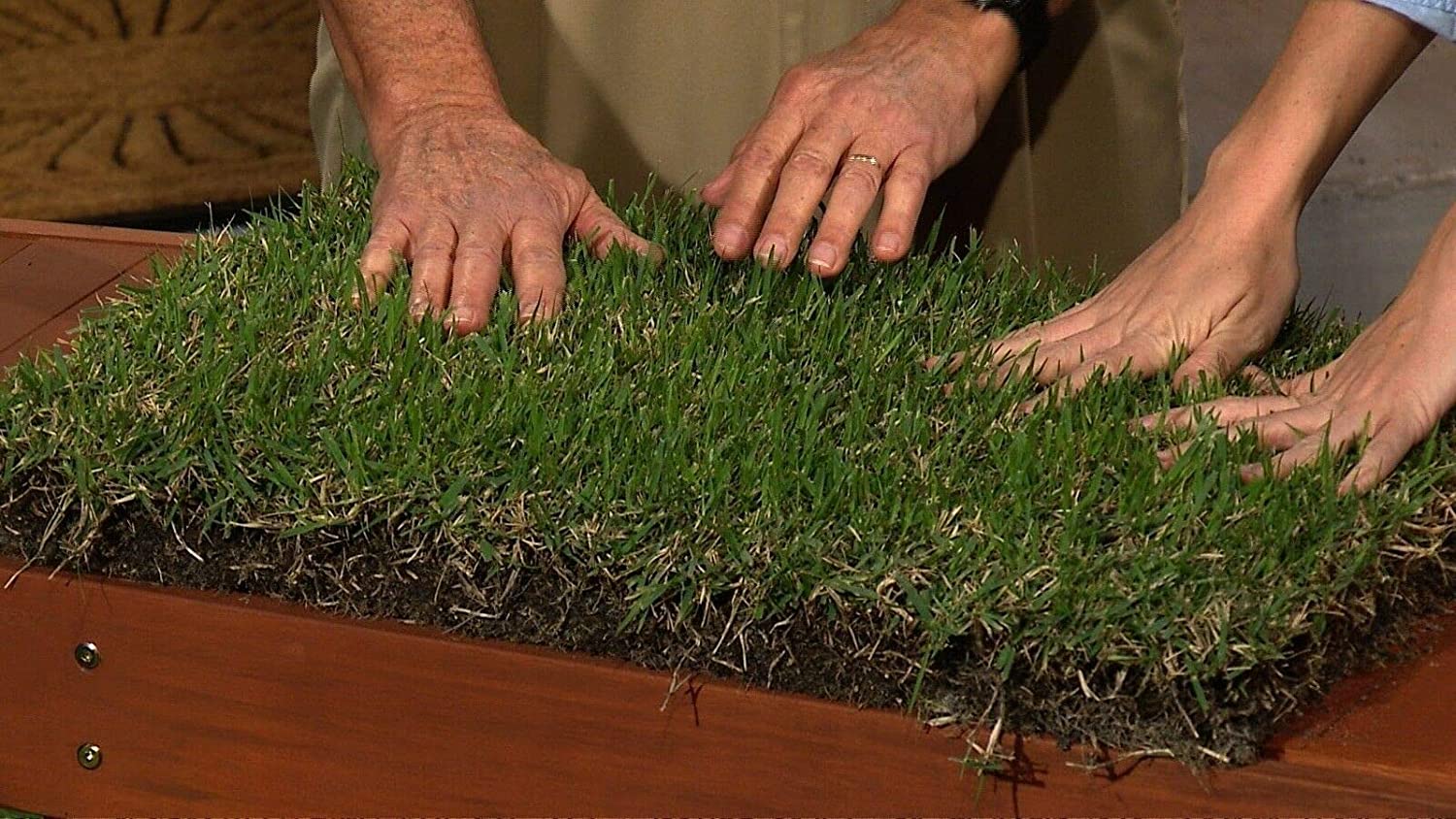
There are numerous brands of Zoysia and Bermuda grass, but their general characteristics are similar. Consequently, opting for a Zoysia Emerald or El Toro won’t alter the time frame required to groom a lawn with Zoysia grass.
Moreover, both Bermuda Hybrid and Common Bermuda require the same amount of sun exposure and they are equally demanding in terms of mowing frequency. Let’s take a closer look at some of the core features of the Zoysia and Bermuda grass.
Growth rate
Both Bermuda and Zoysia are established through sods, plugs, or seeds, but the speed at which these two types of grass spread through the underground rhizomes and above-ground stolons is different.
All varieties of Bermuda grass grow rapidly during the late spring and summer which is why they are a better option if you want to cultivate grass in a relatively narrow time-frame.
Zoysia varieties usually need perfect conditions to start growing within a single season and they often need two or three seasons to reach their full potential. However, a slower growth rate results in a dense turf that doesn’t leave space for weeds to take root.
Spreading 8 pounds of 3-2-1 granular fertilizer per 1000 square feet in the late fall and early spring can increase Zosyia’s growth rate. Even so, containing the spread of the Zoysia grass is much easier than preventing the Bermuda grass from spreading.
Climate and sun exposure requirements
Bermuda and Zoysia grass types originate from warm climates, and opting for either of them is only a good decision if you live in an area with long warm summers and mild winters.
Hence, if you are from Northern Europe, Canada, or northern regions of the USA it may be difficult for you to cultivate any of the Zoysia or Bermuda varieties. Also, Bermuda grass has a relatively low shade tolerance which only makes it suitable for terrains that are exposed to the sun throughout the day.
It also has a high sensitivity to cold weather as frost causes it to dry and lose its natural color. Zoysia on the other hand has a good shade tolerance as it doesn’t need constant sun exposure to grow.
Moreover, this breed of grass can also withstand brief periods of drought as it doesn’t require an extensive amount of water to retain its color. That is why you will only have to water Zoysia grass daily during periods of extreme heat or if the soil is predominantly sandy.
Traffic resistance
If you are looking for a grass type you can use on a football pitch, a golf course, or a baseball field, Bermuda is probably a better choice, as its rapid growth eliminates the effects of damage that occurs as a result of heavy traffic.
Although its growth is somewhat slower Zoysia grass is also frequently used on football and baseball fields. Bermuda is more resilient to traffic, but Zosyia’s density ensures that heavy traffic cannot cause substantial damage to it.
The watering frequency and maintenance requirements make Bermuda grass more demanding than Zoysia grass. That’s why different Zoysia varieties are better suited for homeowners that don’t want to spend too much time cultivating their lawn.
Dormancy period
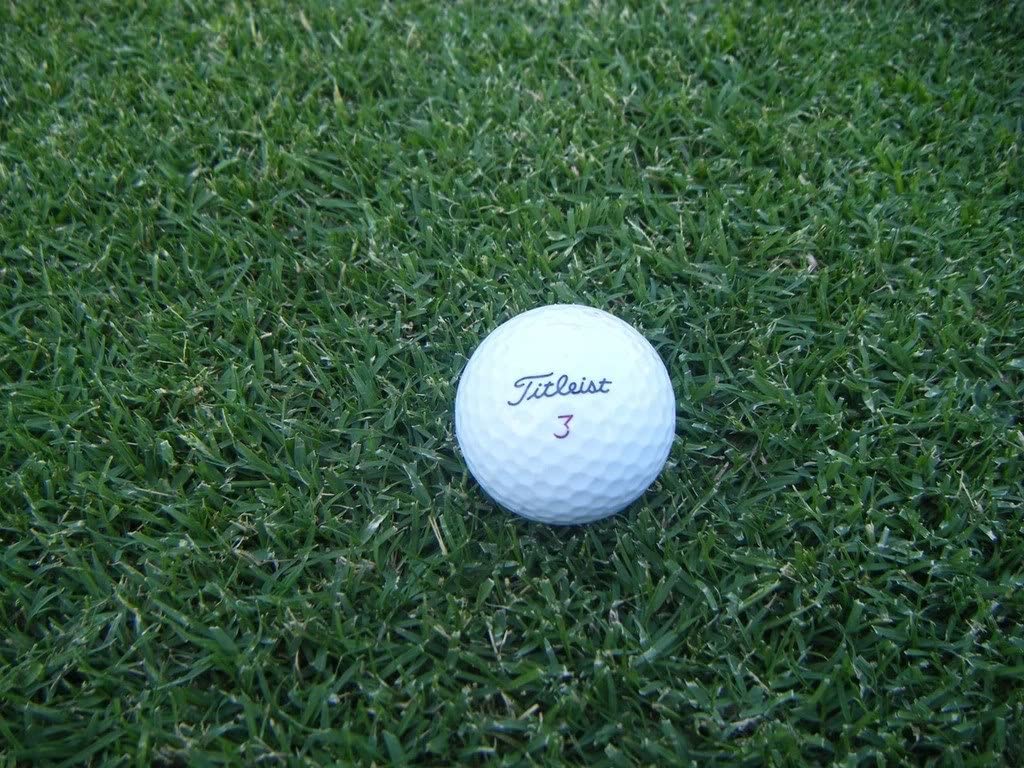
Zoysia and Bermuda are perennial plants that start growing without anyone’s assistance at the beginning of each season. The ideal time to plant Zoysia and Bermuda grass is mid to late spring, once the frost-free period has already started.
These grass types turn brown after prolonged exposure to cold weather and stay that way over the winter. Their dormancy period extends throughout the winter and early spring, and they start growing again once the temperatures rise well above zero.
Neither of these grass types requires maintenance during the dormancy period although extremely cold weather may affect their roots. Even though Zoysia needs take to take hold, it becomes difficult to get rid of it once it does.
Bermuda grass requires constant irrigation, and it is not as resistant to drought as Zoysia which is the reason why you must spend more time cultivating it.
Risk of disease
All types of grass are susceptible to disease and Bermuda or Zoysia are not different in that regard. Inadequate sanitation, unfavorable weather conditions, or inappropriate cultural practices all increase the risk of pests and diseases.
What’s more, Zoysia forms a heavy thatch, a brown or black layer of plant debris that is located between the grass and the soil. As this layer grows it becomes increasingly difficult for water, fertilizers, or pesticides to reach the soil.
In case Zosyia’s roots are in this layer, they won’t receive the water or nutrition the grass needs to grow. Exposure to low temperatures is going to make Zosyia susceptible to dollar spot, a disease that creates brown spots and white webbing.
Microscopic worms called nematodes feed on Bermuda and Zoysia roots which in turn stunts their growth and causes them to lose their color.
Mowing frequency
Thickening of Bermuda and Zoysia grass makes them difficult to mow, and they require regular mowing in order to keep a lawn or any other surface neat.
The ideal length of these grass types is between half an inch and an inch and a half, depending on your preference. In order to maintain their length within this range, you will have to mow the surface on which they grow at least once a week.
Moreover, a rotary mower may end up cutting the grass too short, and switching to a reel mower will enable you to prevent your lawn from becoming puffy while avoiding scalping at the same time.
You should also keep in mind that monthly fertilization may also be required to keep Bermuda grass in good condition throughout the entire season.
Who should opt for Zoysia and Bermuda grass?
If you are living in a region that has a warm climate then either of these grass types can be a good choice. However, if the terrain on which you want to plant Bermuda grass has a significant amount of shade it may be difficult to cultivate it.
Even so, Bermuda grass grows faster than Zoysia, under the right conditions which makes it a more suitable choice if you want quicker results. It is also important to check the soil’s pH value as Zoysia doesn’t react well to soil that has a pH value that is larger than 6.0.
Homeowners opt for different breeds of Zoysia because they require less maintenance and they are usually less invasive than Bermuda grass. The high traffic resistance makes Bermuda grass the most common choice for golf courses and other sports applications.
Zoysia vs Bermuda – Pricing
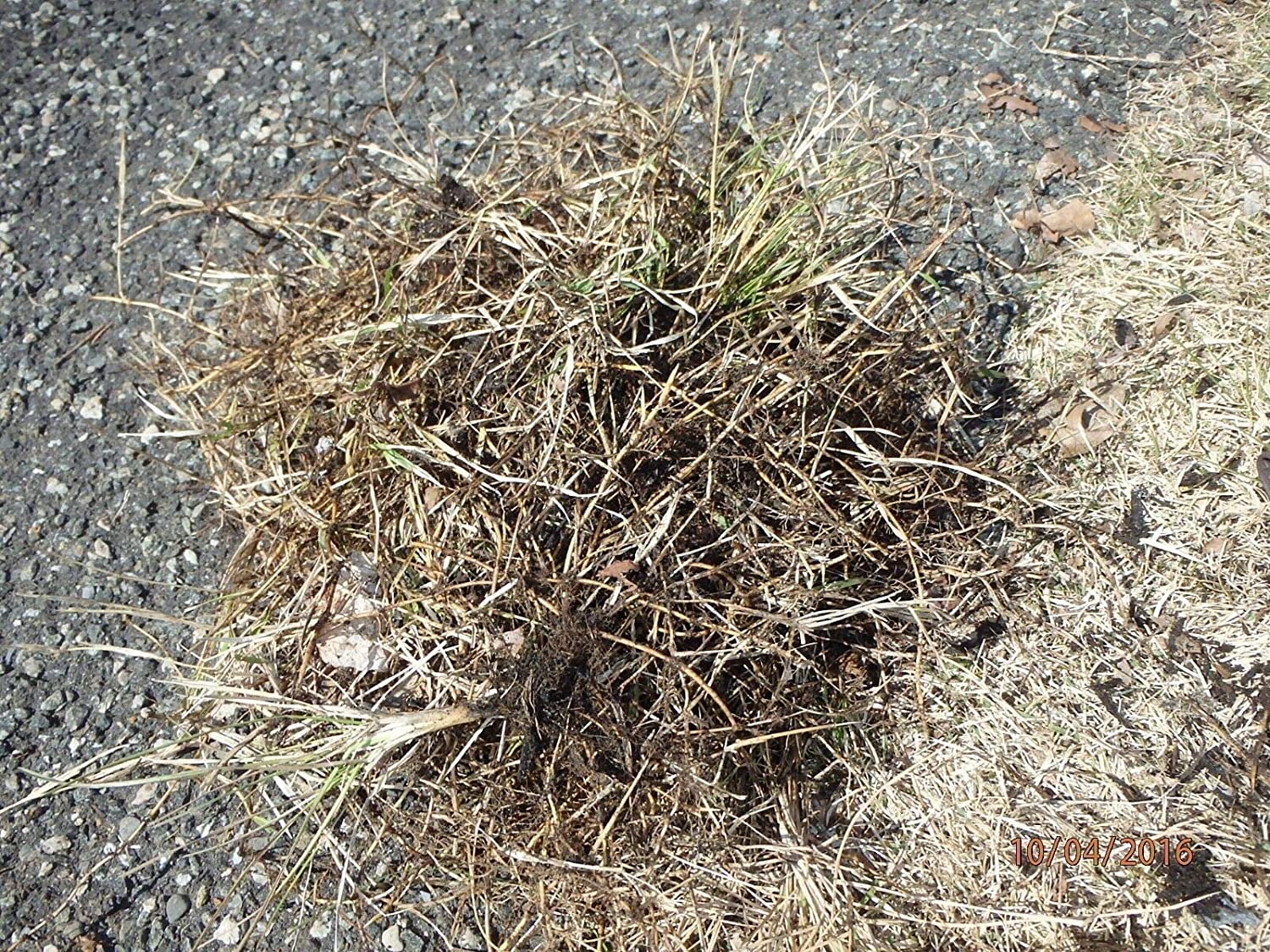
The actual cost of Zoysia and Bermuda grass depends on the variant. So, you may end up paying between $0.40 and $0.60 for a square foot of Zoysia or anywhere between $170 and $240 for a pallet. Bermuda’s price range is wider, as you can spend between $0.30 and $0.85 per square foot for different variants of this grass. Hence, a roll of Bermuda grass will cost you $3 to $9, while you can get a pallet for $180 or $380.
Zenith, one of the best Zoysia brands, can cost up to four hundred dollars which makes it more expensive than any of the Bermuda varieties. The price difference between these two types of grass is almost marginal, and it is highly unlikely that it will impact your decision to opt for one type or the other significantly.
Zoysia VS Bermuda – Pros and Cons
Zoysia
Pros
- Capable of withstanding moderate droughts
- Produces dense turf that prevents weeds from taking root
- It isn’t affected by shade
- Good traffic resistance
- Low maintenance requirements
- Doesn’t require frequent irrigation
- Moderate fertilization demands
- Relatively resistant to diseases
Cons
- It takes a long to establish it
- Heavy traffic can damage it
- Thatch build-up potential
- Demands soil with excellent drainage
Bermuda
Pros
- Rapid growth
- Excellent salinity tolerance
- Suitable for different types of soil
- Not susceptible to disease
- Capable of withstanding heavy traffic
- Long lifecycle
- Well-adjusted to dry climates
- Dark green color
Cons
- Requires frequent mowing
- High irrigation and fertilization demands
- Demands constant sun exposure
- Permits weeds to take root
The Best Alternatives to Zoysia and Bermuda grass
Even though Zoysia and Bermuda are widely accepted as some of the best warm climate grass varieties there are numerous alternatives that may be better suited for your needs.
Zoysia’s slow growth or Bermuda’s high irrigation requirements may prompt you to consider their alternatives. We’ve shortlisted several grass varieties you can use to create a perfect lawn, so let’s take a closer look at some of their features.
St. Augustin Grass
You will need at least four hours of sunlight on your lawn to cultivate St. Agustin grass. This grass variety is famous for its blue-green hue, but during winter months leaf blades turn yellow and remain that way until the spring.
Check out our full guide on how to get rid of yellow grass
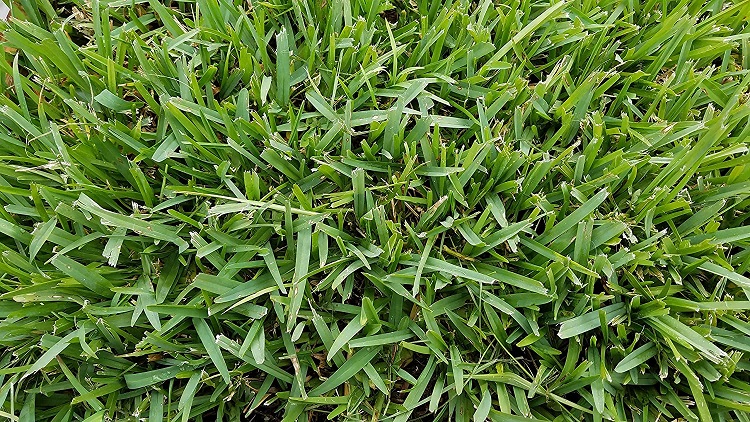
St. Augustin grass doesn’t take a long time to grow and it forms a dense turf that needs a moderate amount of maintenance. Although this grass variety doesn’t require constant exposure to the sun, you may have difficulties cultivating it in areas that are in deep shade.
Despite being adaptable to different types of soil, this grass variety may require additional iron and other micronutrient supplements in case the soil has a high pH value. This grass variety has high maintenance requirements and it cannot withstand frequent traffic.
Even so, you won’t have to cut it shorter than 3 to 4 inches as trimming it too short will cause it to thin.
Buffalo Grass
This grass variety has excellent shade tolerance which makes it a perfect choice for lawns that don’t get a significant amount of exposure to the sun.
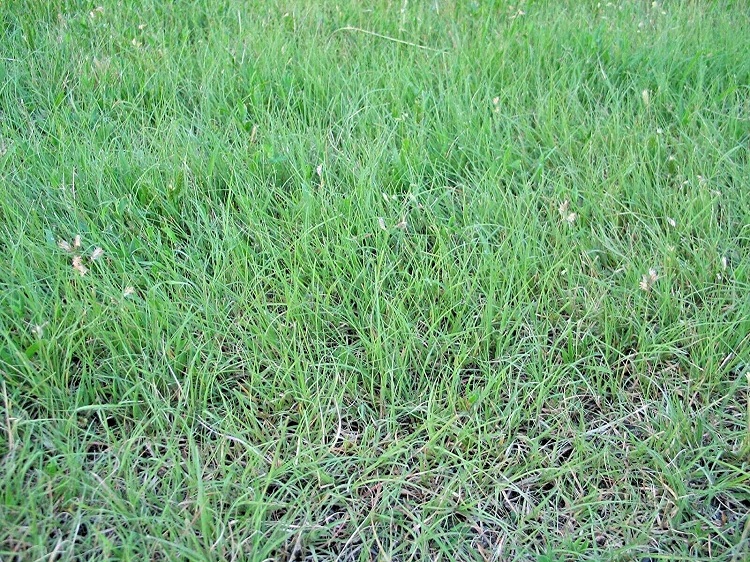
Buffalo grass develops the thatch layer when it is grown in the sun, which is the reason why it is commonly used on surfaces that are predominantly in the shade.
Besides, almost all brands of Buffalo grass react differently to sun exposure and you should opt for the one that is least prone to thatching to avoid irrigation and fertilization issues.
None of the Buffalo grass varieties respond well to the heavy traffic which is the reason why this type of grass is rarely used for sport applications. Buffalo grass grows rapidly and it needs frequent mowing so that the lawn remains in good condition.
Fescue Grass
There are more than 300 different species within the Festuca genus, but most homeowners cultivate fine fescue grass on their lawns. This grass type is characterized by narrow leaf blades that benefit from prolonged sun exposure.
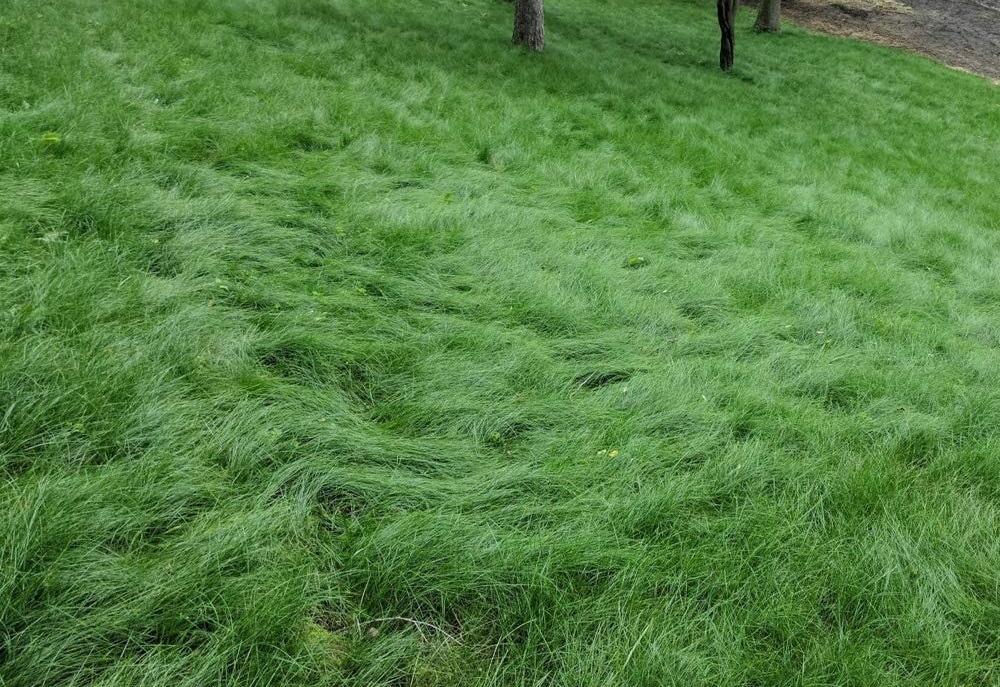
Although mowing fescue grass makes your lawn look neat and tidy, letting this grass grow can also create a strong visual impact as its long wavy blades produce an impression of a naturalized setting. This type of grass takes a long time to establish, so you shouldn’t expect results soon after you plant it.
Fescue grass can thrive on different soil types, and you can use it on rocky or sandy terrains with the same amount of efficiency. Also, this grass type eliminates the weeds by releasing amino acids into the soil that stunts their growth and enables the fescue grass to overcrowd the weeds.
FAQs About Zoysia and Bermuda grass
Answer: Yes, it can. Zoysia is one of the most frequently used types of grass on football and baseball fields, but its relatively low traffic resistance increases the maintenance requirements.
Answer: Under ideal conditions, Zoysia grass will start growing within one season, however, it usually takes a few season units it establishes itself.
Answer: Yes, you can, but you should keep in mind that this is a high maintenance grass that requires frequent mowing in order to be contained.
Answer: A single pallet will cover a 450 square foot area, so the number of pallets you are going to need depends on the size of your lawn.
The Verdict: Is Zoysia grass better than Bermuda?
The answer to the question of which of these two grass types is better depends on the context in which you want to use them. Neither Zoysia or Bermuda can flourish in cold climates, although Zoysia needs less sunlight than Bermuda.
Both grass types have an excellent salinity tolerance which makes them well-adjusted to the proximity of the sea and enables them to grow even under extremely warm weather conditions. Zoysia needs less water to remain green than Bermuda but thatching can block its access to water almost entirely.
The demand for constant sun exposure and high traffic resistance make Bermuda grass an excellent option for parks and other large areas that are designed for outdoor activities. Zoysia, on the other hand, is a more reliable option for homeowners that don’t want to spend too much time maintaining their lawn.
Was this Zoysia VS Bermuda grass comparison helpful? Leave a comment and let us know.

